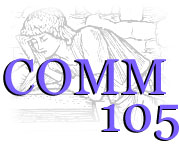
Office: HGH 210; phone: (408) 924-5378
Email: wooda@email.sjsu.edu
Web: http://www.sjsu.edu/faculty/wooda

|
Dr. Andrew Wood Office: HGH 210; phone: (408) 924-5378 Email: wooda@email.sjsu.edu Web: http://www.sjsu.edu/faculty/wooda |

Take a look at the image above. What do you see? Which side is more authentic to you? On the left, you see an apparently unspoiled beach with a palm tree in the foreground - on the right: a wall of beach resorts. One might argue that both images represent an illusion; one is simply more obvious than the other one. Both images, however, reflect a peculiar standpoint.
Jamaica Kincaid's A small place illustrates a response to tourism on the island of Antigua. Doing so, she rebukes the standpoint that produced both of these images - from the perspective of postcolonialism. One might propose that postcolonialism studies/critiques structural/functional construction/oppression of individuals/groups through national/imperial practices/discourses. What's with all the slashes? One component of postcolonial thought is its play with various continua and opposition to the use of fixed definitions.
In many ways, this play with boundaries might remind you of our discussion of David Sibley's border crossing chapter. After all, the rhetorical borders between peoples and nations becomes the site for interrogation from a postcolonial standpoint. As Kincaid (1988) notes, when crossing the customs barrier from airport to foreign country, "immediately you feel cleansed, immediately you feel blessed" (p. 4). The primary theme we draw from this reading is that tourism is a privileged experience, one that rests upon a foundation of inequity.
We are particularly interested in Kincaid's critique because of her reading of the tourist in her homeland. Not only is the physical island reconstructed to accommodate the moneyed other - best illustrated by the roads being re-paved prior to the visit of the Queen in 1985 - but even the tourist his or herself becomes an artificial process of desire and reflection:
In many ways, this notion of the tourist amplifies the one provided by Orvar Löfgren's (1999) book On Holiday. Here, the tourist employs various technologies to attain the sublime: an aesthetic experience verging on a religious encounter that invites a sense of awe. These technologies, often employed to construct a panorama or picturesque scene, invite the tourist to relate his or her experience with an idealized one, usually mediated through various forms of popular culture. Doing so, the tourist engages a tension between the unique and the homogenized, between the impromptu and prefabricated "discovery."
Why do tourists seek the vacation experience even when they know it to be artificial? Löfgren (1999) writes: "I view vacationing as a cultural laboratory where people have been able to experiment with new aspects of their identities, their social relations, or their interaction with nature and also to use the important cultural skills of daydreaming and mindtraveling" (p. 7). However, Kincaid (1988) reminds us that the privilege to cultivate these talents is enjoyed almost solely by the white middle and upper-class of North America, Western Europe, and Japan:
At some point, however, tourism has evolved to a point in which "getting away from it all" is no longer necessary. Such postmodern tourism may be described as the celebration of banality to such a degree that any site becomes both exotic and commonplace. At once tourism loses its distinction as an other-place based activity but rather becomes a virtually endless progression of simulated landscapes, ironic detachments, and opportunities for souvenir collection. Consider the technology in the illustration to the left: Polaroid i-zone camera. Essentially disposable, its low-resolution images are imagined to transform the mundane into the exotic. As a corollary, of course, the exotic becomes mundane: representations of nothing in particular, except the power to become a tourist pretty much anywhere.
Also see: